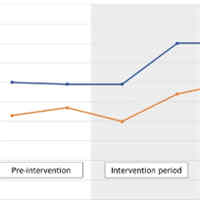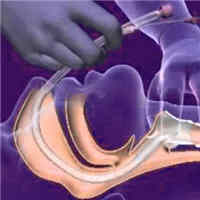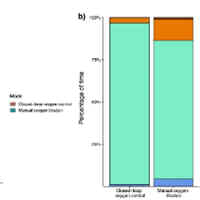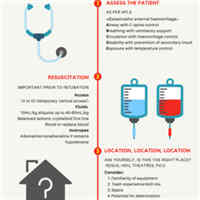Tag: intubation

Intubating the Critically Ill Patient: A Step-by-Step Guide for Success in the ED and ICU
Intubating critically ill patients is a process that requires a well-thought-out, step-by-step plan, specific to each patient. This book teaches the steps necessary to predict, prepare, perform, and provide pre and post-intubation... read more

Effect of ICU Quality Control Indicators on VAP Incidence Rate and Mortality
This study highlights the association between the ICU quality control (QC) factors and ventilator-associated pneumonia (VAP) incidence rate and mortality. The process factors rather than the structural factors need to be... read more

Improving Intubation Performance with Airway Registries
Airway registries are used as a crucial tool to monitor and improve intubation performance and patient care. ED airway registries inform and document the efficacy of quality improvement initiatives to improve intubation performance... read more

Is It Time to Abandon Routine Mask Ventilation Before Intubation?
Mask ventilation in the period between induction and intubation has traditionally been used to confirm the ability to ventilate the patient while awaiting the onset of adequate neuromuscular blockade. However, recent studies... read more

Continuous Positive Airway Pressure Usage During COVID-19
We confirm that use of early continuous positive airway pressure (CPAP) with high-flow output combined with an "ad hoc" algorithm to inform the decision to intubate is a valid and safe strategy for respiratory support in... read more

The effect of a multi-faceted quality improvement program on paramedic intubation success in the critical care transport environment
A multi-faceted advanced airway management (AAM) quality improvement program (QIP) resulted in statistically significant increase in intubation first pass success rates (FPS) rates and a non-significant improvement in DASH-1A... read more

Bougie vs. Endotracheal Tube with Stylet on Successful Intubation
Among critically ill adults undergoing tracheal intubation, use of a bougie did not significantly increase the incidence of successful intubation on the first attempt compared with use of an endotracheal tube with stylet. Among... read more

Improving Outcomes in Patients with Difficult Airways
Evidence indicates that the airway community has successfully conquered the anatomically difficult airway, as these patients are managed safely with a low incidence of morbidity and mortality. In contrast, the literature... read more

Nasotracheal Intubation on Postoperative Neonates with Congenital Heart Disease
Nasotracheal intubation (NTI) is feasible and safe in neonatal cardiac surgery. System-level engagement with stakeholders is necessary to change clinical practice. NTI facilitates early SLP evaluation and treatment and significantly... read more

Trends in Time to Extubation for Pediatric Postoperative Cardiac Patients
In this large, multicenter database study, early extubation rates in postoperative cardiac patients did not significantly change between 2009 and 2018. Centers that performed early extubation more frequently did not have... read more

High Flow Nasal Cannula: Physiological Effects and Clinical Applications
This book presents the state of the art in high-flow nasal cannula (HFNC), an oxygen therapy technique that has recently proven to be a very promising approach to supporting respiratory function in several medical fields. In... read more

Nasal High-Flow Therapy during Neonatal Endotracheal Intubation
Among infants undergoing endotracheal intubation at two Australian tertiary neonatal intensive care units, nasal high-flow therapy during the procedure improved the likelihood of successful intubation on the first attempt... read more

Closed-loop oxygen control improves oxygen therapy in AHRF patients under high flow nasal oxygen
Closed-loop oxygen control improves oxygen administration in patients with moderate-to-severe AHRF treated with HFNO, increasing the percentage of time in the optimal oxygenation range and decreasing the workload of healthcare... read more

Critically Unwell Child Intubation in the ED
Intubation in the pediatric emergency department is scary stuff. For critically ill children who require intubation, it is rarely practiced outside of the critical care unit. With the centralization of services there are... read more




